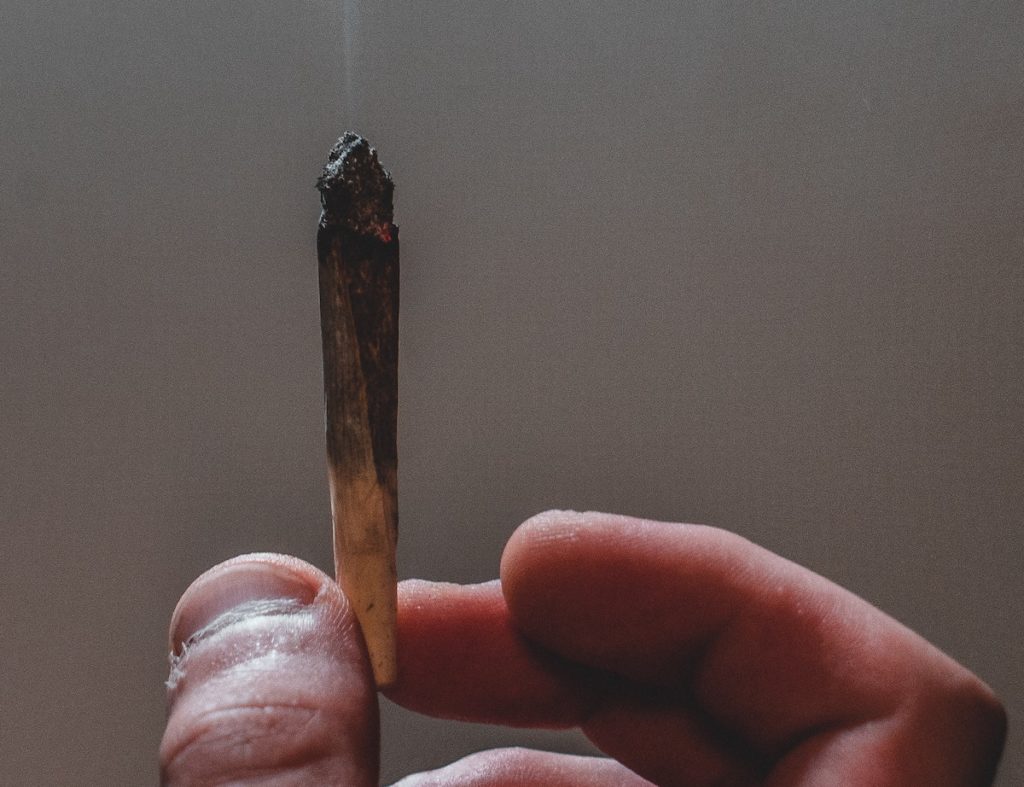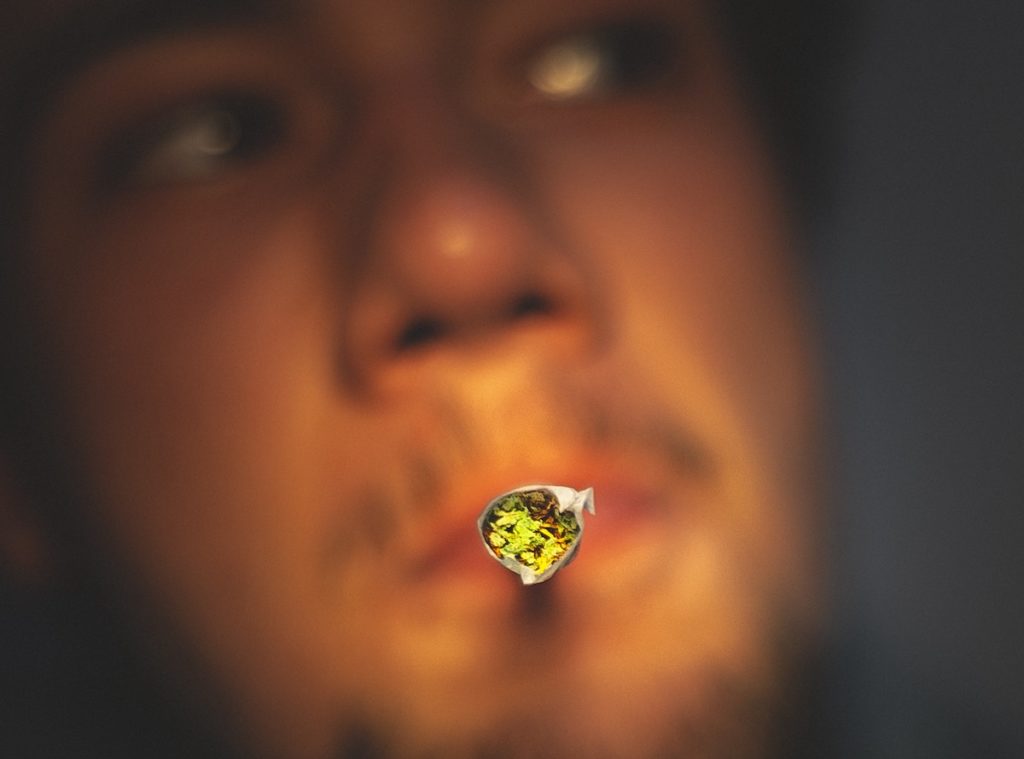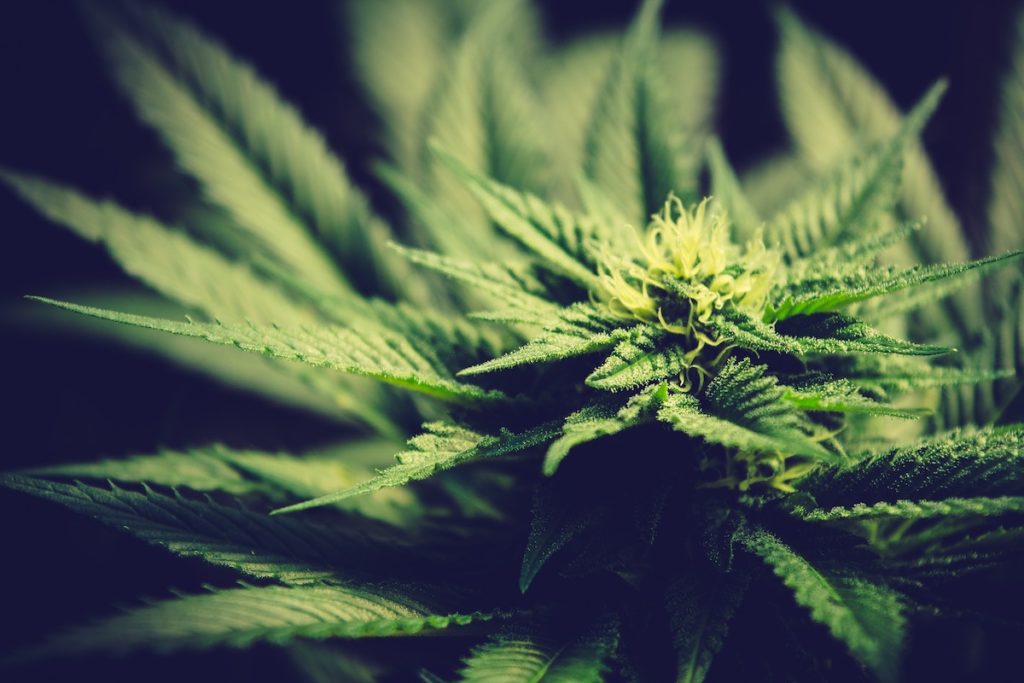
Cannabis is a commonly used illicit substance, with a postulated 3.8% global use and with major research into its role in psychosis already permeating the public field (Fergusson et al, 2006; UNODC, 2017). With opinions divided over its possible role in multiple conditions and the risks of use (Bridgeman et al, 2017), never has there been a more important time for empirical research supporting or refuting its use.
Cannabis (or marijuana) is a naturally occurring plant with multiple psychoactive properties, the principle compounds of which most revered to user and clinicians are THC (tetrahydrocannabinol) and CBD (cannabinoid) respectively. The former is attributed to both the ‘high’ and ‘psychoactive effects’ of the drug (di Forti M et al, 2009), which are enjoyed by users and found in greater proportion in high-strength varieties such as ‘skunk’ and in the troubling synthetic derivative ‘spice’.
CBD is oft hailed for its medical use, with encouraging research into its analgesic and anxiolytic effects prompting legal adoption of the compound as therapy for a range of disorders including epilepsy (EA, 2018). It has also been proposed to be of benefit in the management of intractable pain and a range of neurological problems (Lim et al, 2017). Studies supporting this use still conflict in their findings, possibly due to issues around unknown ratios of compound composition and patterns of use.
It is thought that the mixture of THC/CBD within natural marijuana predicts the experience of the user, with a higher fractional component of THC leading to more bizarre and deleterious experiences. It is here, with current social usage trends favouring high THC varieties, which are dose associated with psychosis and risk of later development of mental health illness, including schizophrenia (Murray et al, 2016.)
However, relatively little has been done to provide comment on the risks associated with its use around depression, anxiety and suicidal behaviour in adolescent use, arguably the most relevant demographic where clinical interventions could play the most efficacious role.
Part of this likely stems from historical hangovers from legislative prohibition, but also consideration of specific cultural predilection to its use and possible stigmatisation.
With a known affective component to THC, and high correlative substance misuse in affective disorders, this is a question of clinical interest. And with mental health disorders such as depression and anxiety on the rise, coupled with a higher risk of suicide in these groups (Bachmann, 2018) the potential dangers of normalising marijuana use under false of pseudo-scientific pretence as either preventative or safe in these conditions is one of global importance. With such efforts around legalisation tied to cultural rights, what may be forgotten is the risk in lieu of appeasing social movements.
This new study provides a meta-analysis of historical research to suggest guidance and provides pause to consider a case for regulation of cannabis based on proportion of THC:CBD if wider use is to be accepted (Gobbia et al, 2019.)

Cannabis is not just a drug, but a social movement. But data suggests that street preparations may not be as safe as commonly thought by users.
Methods
The aim of the research was to compare data on cannabis use and long term follow up of linked mental health disorder and suicide.
Researchers utilised a rigorous search of academic databases, discounting duplicates and creating a base stock of some 3,142 records. Further evaluation using strict criteria were then applied, including publications that were original, included adolescent cohorts, control of extraneous variables and longitudinal follow up as well as other refining parameters. By the end of the selection process, 46 studies remained, of which 11 reached quantitative analysis.
Data was extracted using structured forms in DistillerSR to elucidate baseline cohort information, pattern of cannabis use, outcome of depression, anxiety and suicidality. The authors make reference to studies only adjusting for baseline mental health disorder being included, suggestively to remove the role of confounding variables or fundamental attribution error in aetiology of outcome.
Data patterns noted included, over different studies, self-reported measures of cannabis use and diagnosis of mental health disorder formed principally on DSM-III/IV measures or other questionnaires.
Statistical analysis included the adjustment for baseline mental health disorder and compared cannabis use with four outcome measures including depression, anxiety, suicidal ideation and suicide attempts. Pooled odds ratios (OR) of other baseline social characteristics such as alcohol use were evident in source data and pooled within statistical analysis to measure contributive effect. Sensitivity analysis to rule out possible cohort overlap was undertaken.
Results
In total, 11 studies met criteria for meta-analysis, seven for depression, three for anxiety, 3 for suicidal ideation and 3 for suicide attempts. Results were pooled across these studies in terms of odds ratios and confidence intervals, measured for significance (OR) and heterogeneity (I2).
- To estimate the odds ratio by which adolescent cannabis use was linked to new onset depression, the outcome measures of seven studies were pooled, showing an OR of 1.37 (I2=0%)
- Three studies pooled for the development for anxiety showed an OR of 1.18 (I2=42%)
- With regard to suicide risk, pooled results for suicidal ideation over three studies demonstrated an OR of 1.50 (I2 = 0%) and suicide attempts showed an OR of 3.46 (I2 = 61.3%.)
Further analysis explored potential heterogeneity comparing use of diagnostic criteria such as DSM or scaled responses, and then between sites of research. The former found no significant difference between diagnostic methodology (OR 1.38, P= 0.74) and between groups comparing US or other (OR 1.24, P=0.21).
Statistical analysis adjusting for potential cohort overlap a sensitivity analysis excluded one study (Degenhardt et al, 2010) and found a persistent significance with OR for association with depression of 1.40 (CI = 1.17 to 1.67.) To account for the role of depression as a cofounder, further multivariate analysis and propensity scoring, accounting for other covariates such as sex and presence of diagnosis, remained significant with an OR of 2.6 (CI = 1.2 to 5.5).
For the remaining 24 non-poolable studies (for reasons of different methods of data analysis or cohort use), systematic review was pertinent in ascertaining the findings and value of individual study outcomes. There was evidence that at 10 years, adolescent cannabis use was associated with a higher risk of mental health disorder (including depression and anxiety) over six studies measuring projection over time. This data was supported by Degenhardt et al (2010).
There was evidence that earlier onset of cannabis use (age 14-15 years) was associated with a higher risk of suicidal behaviour, but that use, and cannabis and depression did not vary with age (Fergusson et al, 2002). There was evidence that females who used cannabis were more likely to develop adult depression than males (Patton et al, 2002).
Two trajectory studies showed that abstinence after use did not readily protect against some deleterious effects of the drug (Brook, 2011; Epstein et al, 2015) and other studies found a positive relationship between use and depression, anxiety, delinquency and poor academic performance (D’Amico et al, 2006).
Other studies found no clear significant relationship between cannabis use and depression (Epstein et al, 2015; Meier et al, 2015; Scholes-Balog et al, 2016; van Gastel et al, 2014; Wilkinson et al, 2016; Windle and Wiesner, 2004). One study found no association with depression, but higher levels of anxiety in chronic users (Epstein et al, 2015) with another finding significant association with self-medication using substance to benefit but a negative correlation between tobacco use and depression in later life (Wilkinson et al, 2016).
Finally, one study found a link between existence of the short allele of the serotonin transporter gene, depression and cannabis use (Otten et al, 2011).

Wide data review has shown that adolescent cannabis use is linked with depression and suicidal ideation.
Conclusions
The authors concluded that there was evidence that cannabis use within a high-risk period of adolescence represents a significant public health concern.
The specific research conclusions, adjusting for those studies not included specifically in the meta-analysis, focused on a higher odds ratio for the development for depression and suicidal ideation in the context of adolescent cannabis use. They argue that although the aetiology of major depression is multifactorial, that cannabis use is an independent risk factor with a modest effect size, that becomes problematic with the high number of users within the US.
They also claim that these findings are coherent, although not proof of, imaging studies that demonstrate a higher level of neurodevelopmental risk conclusions, which suggest that cannabis during adolescent years will have an adversarial effect on neuroplasticity. They reference variations in neuroanatomical concentrations of cannabinoid receptor density and decrease in cortical grey matter within the hippocampus, amygdala and prefrontal cortex, and increases in density within other brain regions including the limbic system.
They go on to comment that cannabinoid exposure causes dopamine tolerance and reduced synaptic linkage and hippocampal pathways in rats.
The authors suggested that these findings highlight the need for public health interventions aimed at targeting peer pressure in high risk groups.

The authors conclusions (that cannabis use within a high-risk period of adolescence are a significant public health concern) are aspirational, but rely primarily on common sense rather than neurobiology.
Strengths and limitations
The analysis provides some strong evidence that adolescent cannabis use is linked with major depressive symptomology, as well as a theoretical cohesion with on-going research into neurobiological effects of the drug within its outcomes. It is able to provide, to a high level, significant data over several studies whilst adjusting for extraneous variables including depression itself, which is reasonably argued as confounding through fundamental attribution error.
The use of both Anglocentric and non-anglocentric cohorts provides some generalisability to the results beyond historically examined groups, and within a growing diversified culture this is of marked note. Simply put, the population studied reflects the target intervention suggested.
However, there is some concern raised over the varied diagnostic criteria of depression, which although adjusted for within further statistical analysis, may have omitted subclinical presentations that led to augmentation through drug use as oft seen in schizophrenia (nicotine). It may be that these studies, convinced of their criteria, have simply missed subclinical syndromes developing de novo that became evident at follow up.
A second point of concern is the speculative link between the findings and the rest of the field. Although cohesive, it produces a romantic picture of cognitive bias, whereby the incidental findings of neuroanatomical and neuromodulatory changes found in other studies are explained by cannabis alone.
Although convincing through repeated neuroimaging, we cannot overlook the potential causation fallacy inherent between noted architectural changes and independent variables, simply put as ‘what came first?’ It is fair to speculate within reason of probability, which is already demonstrated within risk management of cannabinoid and psychosis in psychotic illness. This is less a critique of the study than science methodology itself but must be taken into account if the conclusions are to be extrapolated.
The authors noted that there were several limitations to the study and fairly summarised them within the methodological apparatus itself, citing that the included studies may not have adjusted fully for other factors. However, the large n value of the included work, as well as the statistical analysis, does compensate largely for the ambiguity. They wisely noted the issues with heterogenous assessment of depression, the specific effect of which on the validity of diagnosis is unclear.
They also noted that the strength and regularity of cannabis use was not clear, which provides some limitation and question on whether threshold levels are associated or whether any exposure creates risk within depression.
The author’s conclusion that this finding necessitates focus on public health interventions around peer pressure are aspirational, and ethical within a consequentialist approach. However, it is not clear the specific strength of peer pressure within the target group, although predictably higher than with other age groups, this would be speculative.
Regardless if a utilitarian counter argument which could present an alternative of therapy over large scale public health intervention, it is reasonable to propose prevention rather than management. Furthermore, projects of this nature would likely have other effects in preventing further substance abuse and provide an opportunity to address sociocultural tenets of disease behaviour.

The study succeeded in showing a link between cannabis use, adult onset depression and suicidal behaviour, but it does not add a great deal to our understanding of the neuroscience.
Implications for practice
Regardless of the considerable limitations in the methodology and aspirational correlates of the research, there is clear evidence that adolescent cannabis use is linked with adult onset depression and suicidal behaviour. What is not clear is whether this cannabis use is causative, or reflective of coping mechanisms of subclinical depression, dose related or provides a sound reflection of neurobiology.
However, it does present opportunities thus:
- Screening opportunity for underlying subclinical depression and the development of later major depression in referred clients regardless of causation.
- Opportunity for psychoeducation and assessment of other substance abuse.
- Further research elucidating dose and mix (CBD:THC) with concurrent risk.
- Primary prevention of depression for the group where odds ratio dictates higher risk, regardless of aetiological explanation.
- Earlier recognition of high-risk cases through earlier onset of substance abuse within paediatric and adolescent mental health.
- Opportunity to integrate primary prevention outside of medical environments such as schools, where these interventions will hold greater weight.
- Reduced costs to client/social system.
Within clinical practice:
- Cannabis use may prompt consideration of subclinical depression or future risk of major depressive disorder in high risk groups, taken in context of clinical presentation.
- Earlier referral to specialist substance misuse services
- Provide some further information to elucidate risk of self-harm and suicide in this target group.
Conflicts of interest
No conflicts of interest to declare.
Cannabis #MHQT, Sep 2018
For those of you who missed it first time around, you can watch our Mental Health Question Time public discussion held at UCL on 25 September 2018, with Ian Hamilton, Val Curran, Marta Di Forti, Suzi Gage, Luke Sheridan-Rains, Shivanthi Sathanandan and Robin Murray.
Links
Primary paper
Gobbi G, Atkin T, Zytynski T, et al. (2019) Association of Cannabis Use in Adolescence and Risk of Depression, Anxiety, and Suicidality in Young Adulthood: A Systematic Review and Meta-analysis. JAMA Psychiatry. Published online February 13, 201976(4):426–434. doi:10.1001/jamapsychiatry.2018.4500
Other references
Bridgeman, M. B., & Abazia, D. T. (2017). Medicinal Cannabis: History, Pharmacology, And Implications for the Acute Care Setting. P & T : a peer-reviewed journal for formulary management, 42(3), 180–188.
Brook, JS et al (2011) Developmental Trajectories of Marijuana Use from Adolescence to Adulthood: Personality and Social Role Outcomes. Psychological Reports 108;2
D’Amico E.J et al (2006) Alcohol and marijuana use trajectories in a diverse longitudinal sample of adolescents: examining use patterns from age 11 to 17 years. Addiction 111;10
Degenhardt, L et al (2010) Outcomes of occasional cannabis use in adolescence:10-year follow-up study in Victoria, Australia . 196(4):290-295.doi:10.1192/bjp.bp.108.056952
Di Forti, M., Morgan, C., Dazzan, P., Pariante, C., Mondelli, V., Marques, T. R. Murray, R. M. (2009). High-potency cannabis and the risk of psychosis. The British journal of psychiatry : the journal of mental science, 195(6), 488–491. doi:10.1192/bjp.bp.109.064220
EA, 2018 https://www.epilepsy.org.uk/info/treatment/cannabis-based-treatments (first accessed 11/5/19)
Epstein, M et al (2015) Trajectories of marijuana use from adolescence into adulthood: Environmental and individual correlates. Developmental Psychology 51;11.
Fergusson, D.M et al (2002) Cannabis use and psychosocial adjustment in adolescence and young adulthood. Addiction 97:9 p1123-1135
Fergusson, D. M., Poulton, R., Smith, P. F., & Boden, J. M. (2006). Cannabis and psychosis. BMJ (Clinical research ed.), 332(7534), 172–175. doi:10.1136/bmj.332.7534.172
Lim, K., See, Y. M., & Lee, J. (2017). A Systematic Review of the Effectiveness of Medical Cannabis for Psychiatric, Movement and Neurodegenerative Disorders. Clinical psychopharmacology and neuroscience : the official scientific journal of the Korean College of Neuropsychopharmacology, 15(4), 301–312. doi:10.9758/cpn.2017.15.4.301
Meier M, et al (2015) Associations of adolescent cannabis use with academic performance and mental health: A longitudinal study of upper middle-class youth. Drug and Alcohol Dependence. 156;1.
Murray, R. M., Quigley, H., Quattrone, D., Englund, A., & Di Forti, M. (2016). Traditional marijuana, high-potency cannabis and synthetic cannabinoids: increasing risk for psychosis. World psychiatry : official journal of the World Psychiatric Association (WPA), 15(3), 195–204. doi:10.1002/wps.20341
Patton, G.C et al (2002) Cannabis use and mental health in young people: cohort study BMJ 325:1195
Otten, R, Engels, R.C.M.E (2011) Testing bidirectional effects between cannabis use and depressive symptoms: moderation by the serotonin transporter gene. Addiction Biology. 18;5.
Scholes-Balog K.E et al (2016) Associations of adolescent cannabis use with academic performance and mental health: A longitudinal study of upper middle-class youth. Addictive Behaviors.
van Gastel W.A et al (2014) Associations of adolescent cannabis use with academic performance and mental health: A longitudinal study of upper middle-class youth. Schizophrenia Research. 157;1-3
Welty, T. E., Luebke, A., & Gidal, B. E. (2014) Cannabidiol: promise and pitfalls. Epilepsy currents, 14(5), 250–252. doi:10.5698/1535-7597-14.5.250
Wilkinson, A.L et al (2016.) Directions of the relationship between substance use and depressive symptoms from adolescence to young adulthood. Addictive Behaviors.
Windle M, Wiesner, M (2004) Trajectories of marijuana use from adolescence to young adulthood: Predictors and outcomes. Development and Psychopathology. 16;4.
UNODC (2017) ‘World Drug Report’ Vienna, Austria.
Photo credits
- Photo by Jonathan Kemper on Unsplash
- Photo by GRAS GRÜN on Unsplash
- Photo by Esteban Lopez on Unsplash
- Photo by GRAS GRÜN on Unsplash
